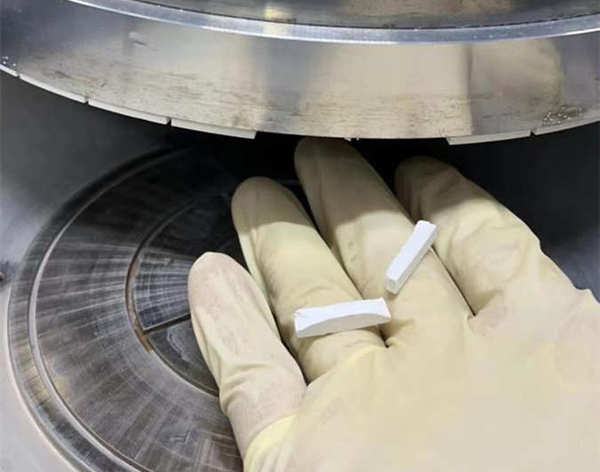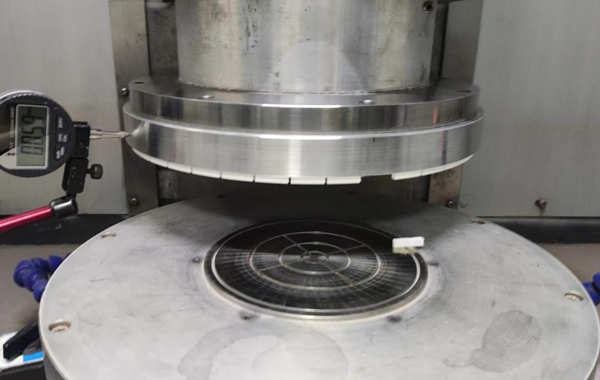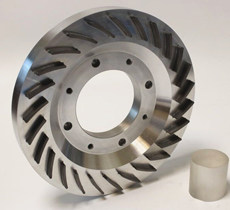In the semiconductor industry, the grinding accuracy of Japanese equipment is pretty good at present, and there are grinding processes combining free and consolidation, as well as pure consolidation processes. Manufacturers who can usually afford Japanese equipment generally use pure consolidation preparation processes. The top three Japanese semiconductor precision processing equipment are: Disico, Tokyo Precision, and SHUWA. SHUWA is widely used in the field of sapphire with high precision.
If free state grinding tools are used instead of consolidated product grinding, there are several elements that need attention: the first is the
precision of equipment, the second is the
diamond polishing pad, and the third is the state of the
free abrasive grains.
Details of Back Grinding Wheel for Surface Grinding
Processing Equipment: Shenzhen Fangda grinding technology (vertical thinning machine) imitation DISICO equipment
Processing Object: Quartz glass thinning
Roughness Requirment: below 10 nanometers
Background Information: The customer is from the semiconductor industry. He used resin thinning grinding wheel 312-31-237-4-6 1000# to process quartz glass, and later used 2000#, but the finish did not meet the requirements. The customer asked us to customize W1 for him ( 15000#) grinding wheel. The customer wants to achieve the effect of no damage to the sub-surface.

The customer's first test situation: the customer reported that 2-3 pieces of abrasives fell off
Reason Analysis of Processing with Back Grinding Wheel for Surface Grinding:
After the thinning grinding wheel was installed on the machine, it collided with the tool during tool setting. The grain size of the grinding wheel is very fine. Since the customer was not clear about the specific operation method of grinding, he used a whetstone to repair it. When it was returned for inspection, it was found that there were cracks in one-third of the place.
The product obviously cannot be repaired anymore, so we made a new piece for the customer to test again, and emphasized that there is no need to repair it. In the second test, another piece of the tooth fell off, and the customer said that the abrasive layer was not touched during the whole process.
 Cause analysis of Processing with Back Grinding Wheel for Surface Grinding:
Cause analysis of Processing with Back Grinding Wheel for Surface Grinding:
In order to find out the situation, we inquired about the customer's installation process, and found that the customer's method of installing the thinning grinding wheel also had problems. We emphasize to customers: when installing, the flange must be removed first, and only longitudinal force can be used. In addition, our engineer suggested that the height of the grinding block can be adjusted in the future, from 7mm to 5mm.
Since only one grinding block was lost, the engineer suggested to test the grinding effect first, and the test grinding can be carried out without abnormal noise when the spindle is idling.
Processing with Back Grinding Wheel for Surface Grinding Result:
Obvious scratches appeared on the surface (none before), and the grinding wheel itself was consumed quickly and could not be ground.
Cause analysis of Processing with Back Grinding Wheel for Surface Grinding: After more detailed communication, our engineers determined the reason for the scratches: because the scratches that had appeared in the customer's previous process with 2000# grinding wheels were just not seen, and they were ground with 15000# Afterwards, the scratch was revealed. (I used to see diffuse reflection, but now it becomes total reflection after polishing, and when it is fully reflected, some places are not reflected and become scratches.)
The normal process is rough grinding 2000#, medium grinding 8000#, and fine grinding 15000#. The customer has one less process, and the equipment is not precise enough. In addition, the process is not perfect. If you go directly from rough grinding to fine grinding, you will definitely not be able to grind. .
Moresuperhard's solutions to solve the problems when Processing with Back Grinding Wheel for Surface Grinding:
1. Allow customers to replace the consolidated 8000# consolidated grinding process with the free grinding process of free abrasive grains (you can try to use polyurethane polishing pads, which cannot meet the requirements of removing scratches, and solve surface adsorption, adhesion, and dumb state of light.)
2. It is recommended that customers use our 8000# thinning grinding wheel to try grinding, and adjust the height of the abrasive layer to 5mm.
Moresuperhard Case Summary:
There are standard processing procedures for thinning grinding wheels. If the span is too large, the effect of processing is not acceptable if it is directly polished. In the process of communicating with customers, we will definitely confirm the customer's process conditions in advance, and then determine the processing plan. Instead of providing the corresponding products for the number of purpose grinding wheels that customers want, more communication and understanding can avoid many unnecessary troubles for customers.







